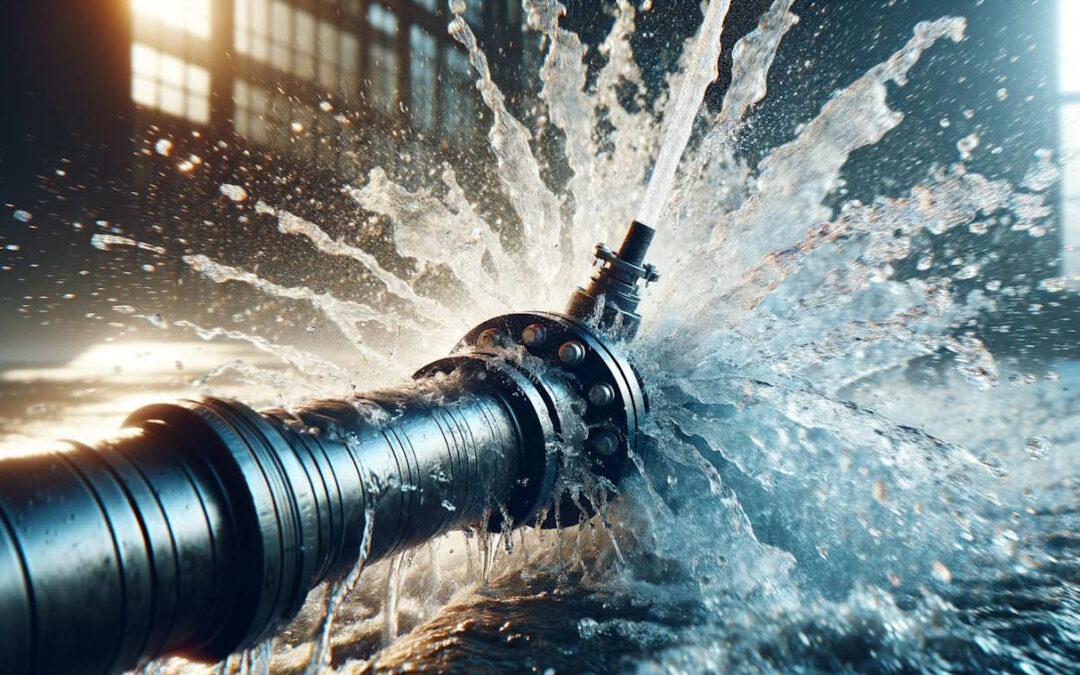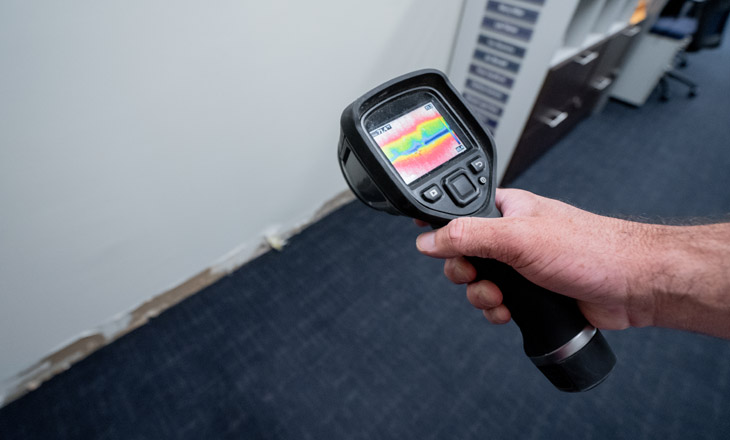Discover Reliable Water Leak Detection Solutions for Accurate and Fast Outcomes
Discover Reliable Water Leak Detection Solutions for Accurate and Fast Outcomes
Blog Article
Ingenious Solutions for Very Early Detection of Water Leakages in Buildings and Framework
From cutting-edge leak detection technologies to the implementation of IoT sensing units for real-time tracking, the landscape of leakage avoidance is evolving quickly. Automated water circulation evaluation systems are improving just how leakages are identified and dealt with, leading the means for a proactive method to water leakage detection.
Advanced Leakage Discovery Technologies
Advanced leakage discovery modern technologies, equipped with cutting-edge sensors and algorithms, play a vital duty in promptly recognizing and determining water leaks in various setups. These modern technologies use a mix of acoustic, thermal, and electro-magnetic picking up approaches to detect leakages accurately. Acoustic sensing units discover the sound of escaping water, permitting exact localization of the leakage source. Thermal imaging discovers temperature changes brought on by water leak, offering another reliable technique for leak recognition. Electromagnetic sensors can recognize modifications in electromagnetic areas caused by water, offering yet one more layer of leak discovery capability.

IoT Sensors for Real-Time Surveillance
In the realm of modern-day water leakage detection, the integration of IoT sensors for real-time tracking stands for an essential innovation in improving positive leakage detection capacities. These sensors offer continuous monitoring of water supply, giving real-time data on water circulation prices, stress variants, and temperature adjustments. By leveraging IoT modern technology, these sensors can identify also the tiniest abnormalities in water usage patterns, making it possible for early identification of prospective leakages prior to they escalate right into significant concerns.
IoT sensors transmit information to a central platform, where innovative algorithms evaluate the info and produce informs or alerts when irregularities are identified. This real-time surveillance capacity enables residential or commercial property owners or center supervisors to immediately resolve leaks, lessening water damage, decreasing fixing expenses, and preserving water resources.
Moreover, IoT sensors can be incorporated with building management systems, allowing for computerized responses to discovered leakages, such as turning off water valves or activating pumps to reduce the impact of leaks. On the whole, the implementation of IoT sensing units for real-time surveillance dramatically improves the effectiveness and efficiency of water leakage discovery in structures and infrastructure.
Artificial Intelligence Algorithms for Leakage Prediction

One key benefit of using device understanding for leak forecast is its ability to continuously find out and boost its accuracy with time. As more data is collected and fed right into the algorithm, it can improve its forecasts and adjust to changing conditions, inevitably enhancing the reliability of leakage detection systems.
In addition, artificial intelligence formulas can help in identifying subtle indicators of leakages that might go unnoticed by conventional surveillance approaches. water leak detection. By analyzing complex information collections in real-time, these formulas can offer very early warnings and signals, enabling prompt intervention and precautionary upkeep to minimize possible water damage and connected costs
Utilizing Thermal Imaging for Leakage Discovery
Thermal imaging technology uses an appealing approach for discovering water leakages in various systems and facilities. By utilizing infrared radiation and temperature level differences, thermal imaging cams can identify covert leakages that are not quickly visible to the nude eye. When water gets away from pipes or structures, it commonly transforms the temperature level of the bordering area, developing temperature differentials that thermal cams can record. These temperature irregularities are after that converted right into noticeable images, highlighting the precise place of the leakage.
One of the key benefits of thermal imaging for leak detection is its non-intrusive nature. Unlike traditional methods that might require breaking into wall surfaces or floorings to locate leakages, thermal imaging enables non-destructive screening. This not just saves time and lowers expenses but also decreases disturbance to the structure or framework being evaluated. Furthermore, thermal imaging can quickly scan large locations, offering a thorough overview of additional resources prospective leakage sources in a prompt fashion. In general, the usage of thermal imaging technology boosts the efficiency and precision of water leakage detection, making it a useful device for preserving the stability of structures and frameworks.
Automated Water Flow Analysis Solutions
Just how can automatic water flow evaluation systems reinvent the detection and monitoring of leakages in various systems and frameworks? Automated water flow evaluation systems supply a proactive strategy to leakage discovery by constantly keeping track of water circulation rates and patterns. By establishing baseline data, these systems can rapidly determine variances that might suggest a leak, making it possible for punctual intervention to prevent considerable damages.
These systems utilize innovative algorithms to evaluate real-time information and supply prompt informs when anomalies are identified, permitting swift action to be taken. Furthermore, computerized water circulation analysis systems can be incorporated with building administration systems or IoT systems, improving general effectiveness and allowing remote surveillance capacities.
In addition, the information accumulated by these systems can be made use of for predictive maintenance purposes, helping to determine prospective powerlessness in the facilities before leakages occur. In More hints general, the application of automatic water circulation evaluation systems can substantially boost leak discovery and administration methods, eventually bring about set you back savings, lowered water wastage, and raised sustainability in structures and facilities.

Conclusion
Finally, the assimilation of advanced leak detection technologies, IoT sensing units, artificial intelligence formulas, thermal imaging, and automated water flow analysis systems offers ingenious remedies for very early discovery of water leaks in structures and facilities. These innovations make it possible for real-time tracking, forecast of leaks, and effective discovery techniques to avoid water damages and wastage. Implementing these solutions can help in preserving the integrity and sustainability of water supply in numerous settings.
Report this page